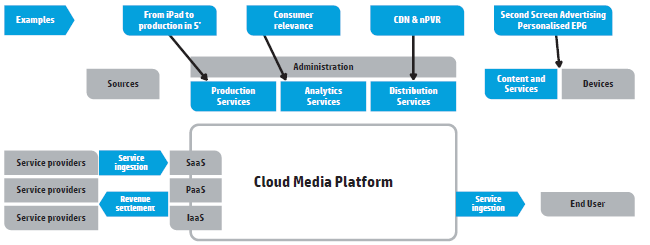Moving away from the “Box”!
Just a few years ago, the TV was the main mass media with two different business models (advertising-funded and pay per view) and in many countries also public funded.
Let’s think that just in last decade the average of
Americans has watched 3 hours and 46 minutes of TV each day (more than 52 days
of nonstop TV watching per year).
Content production was the core business directly connected
to a broadcaster’s success and contents were designed as «one size fits all»
with fixed time schedules.
Audience metering and analysis was based just on samples and
TV was advertisers’ first choice and the main revenue stream for broadcasters.
The new style of TV changed the habits of consumers
providing them new paradigms of interaction with the TV players, in fact
consumers don’t need to wait for their favourite programs or change their
habits related to a scheduled entertainment, they can select the content they want, when they
want, where they want and choosing how they want it.
They can interact with the content (live or not) in order to
provide feedback, interact with other consumer, purchase related content, view
value added contents, etc.. They can access directly to the content provider
without an "intermediate" They can access to mobile entertainment deciding to have burst interaction with contents, enabling a new reality
"short videos"
On the manufacturing side the adoption of tablets,
especially the iPad, have been the main driver that pushed TV companies to
accelerate the development of “TV everywhere” applications that let consumers
access shows on other devices.
The digital revolution changed the TV value chain and
introduced new levels of complexity.
The technology evolution enabled every player to stretch
their position on the video value chain in order to be directly connected to
the consumers. And now, the audience is more sophisticated and no longer
accepts simply tuning into TV programs.
Always-on smart devices provide information about video
consumption to content and service providers, enabling self-learning and
recommendations.
This new audience is composed of consumers that access and
interact from different, nonhomogeneous platforms, often multitasking on
various digital devices and applications, and sharing with others their
interest about TV shows on social networks.
The advertising industry drives to a more interactive and
consumer-friendly technology, one that directly engages the consumer shifting
from a product-centric to a consumer-centric paradigm.
Moreover, TV is now social shifting from a mass media to a
community media paradigm, enabling viewers to easily search and navigate a
growing number of videos and TV shows, and create personalized EPG
(Electronic Program Guide), based on their social graph and interaction.
Every player in the video value chain can be relevant to the
consumer throughout the chain, directly engaging consumers with personalized
offerings that leverage their habits and real-time needs.
In the near future, players on the value chain will
create alliances to grow their business. Alliances will be created following
content distribution and consumer engagement strategies based on maturity,
service provided, and closely linked business plans, synergies, scalability,
and offering differentiation.
For example, Telcos are agreeing with OTT with QoE and flat
bundle for local distribution.










